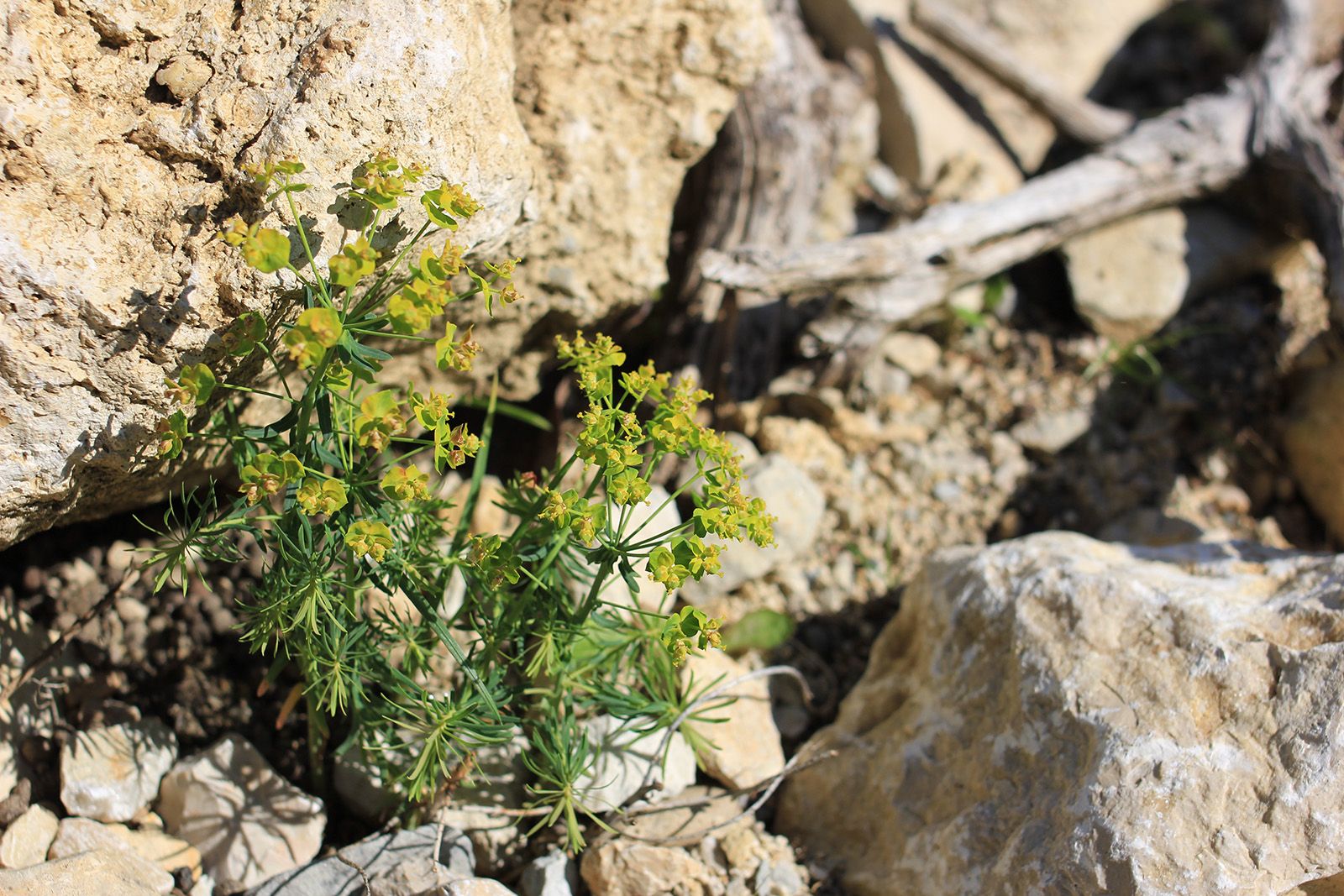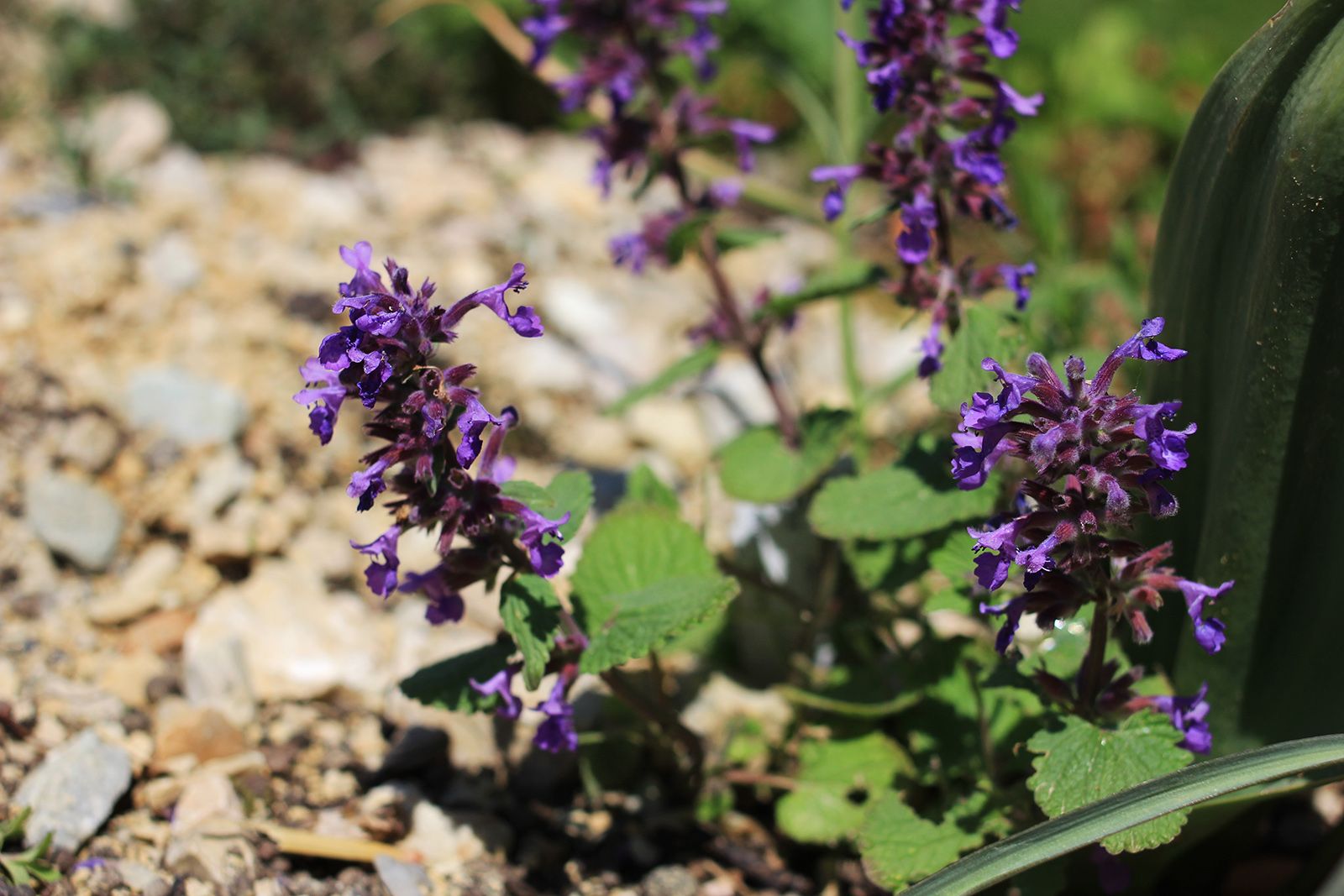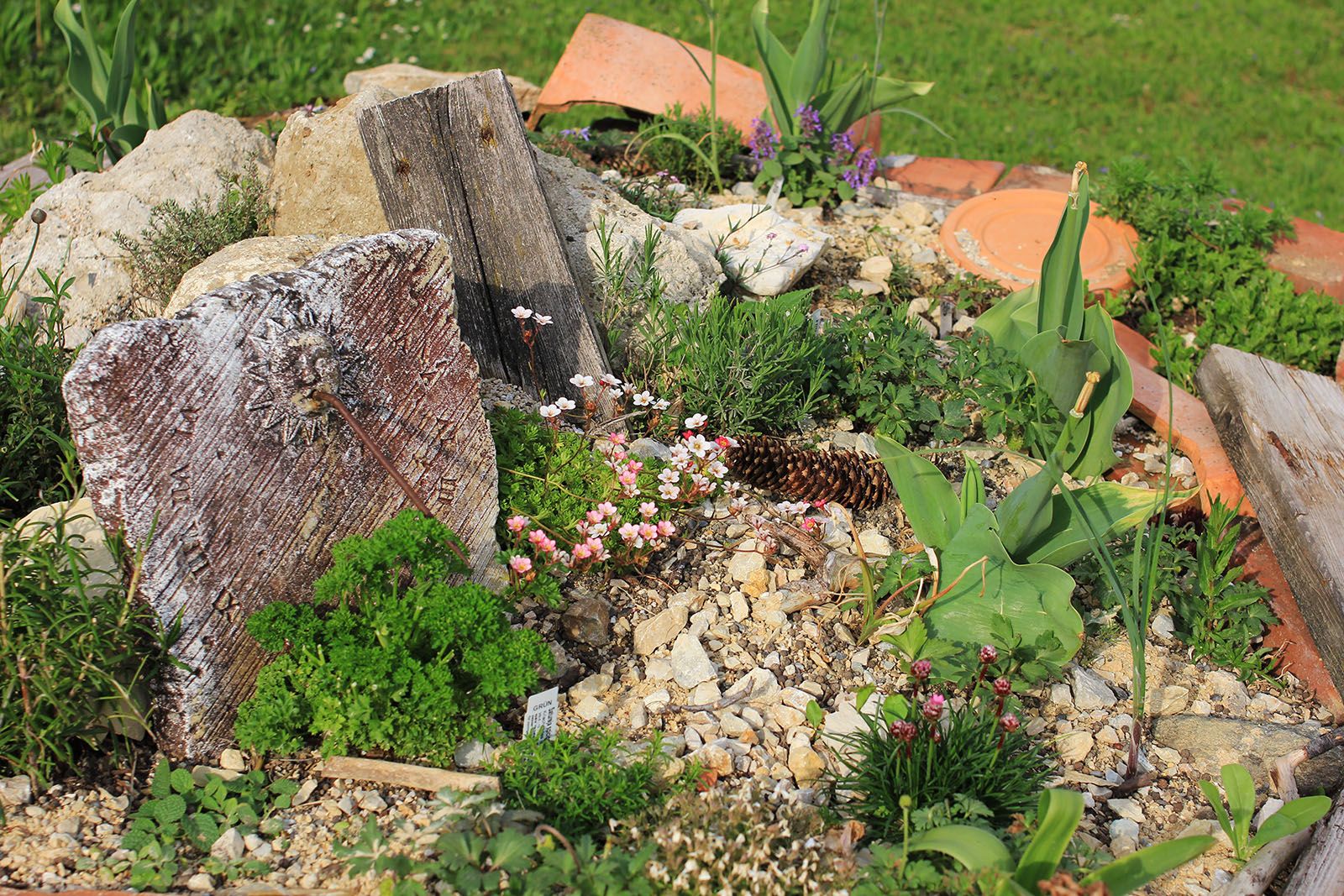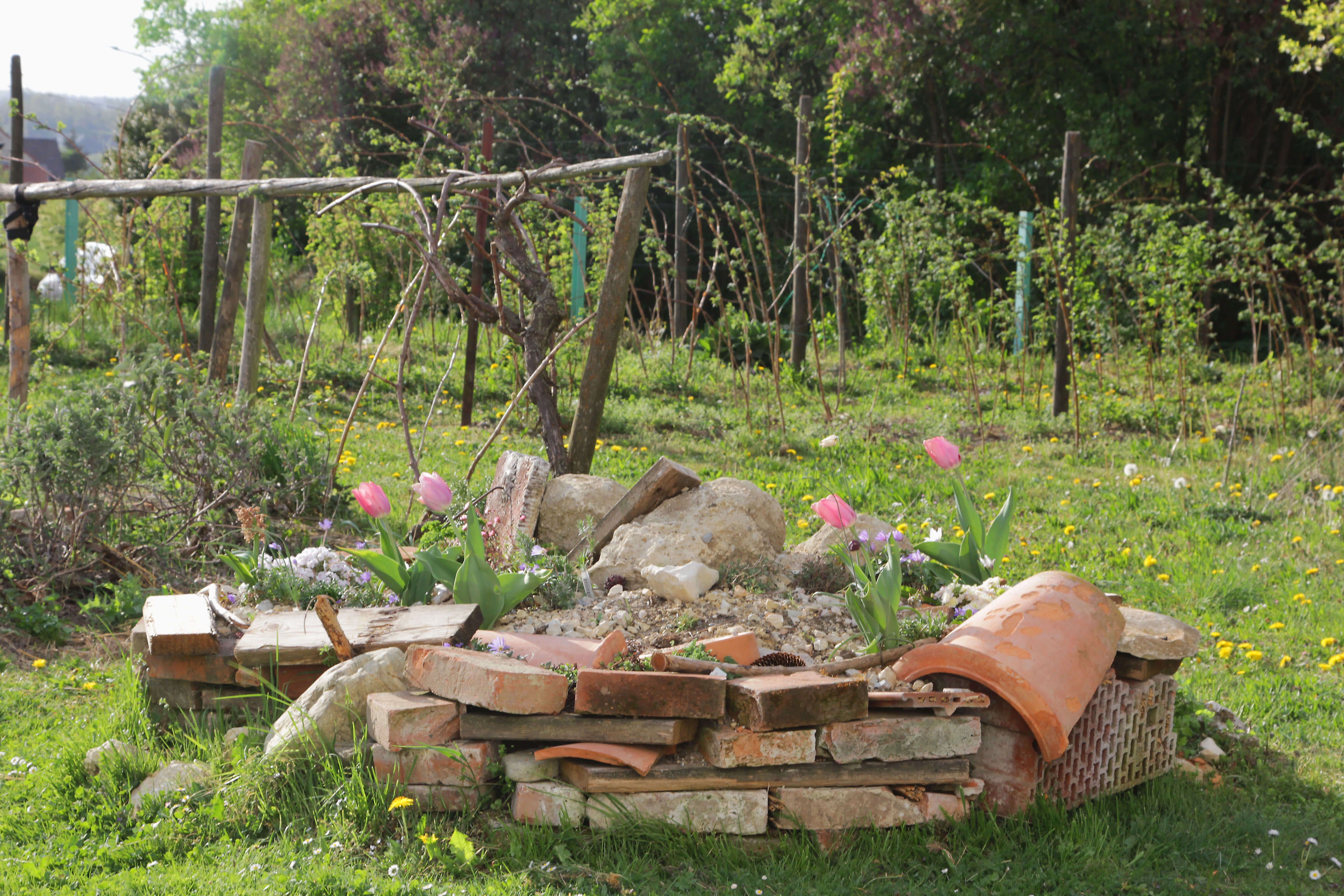Creating a low-nutrient site
First of all, an important note about the soil. It is often not known that most, i.e. about 1300 of our native plant species prefer a very low-nutrient soil, i.e. a substrate that is hardly ever found in our home gardens. In contrast, there are just 70 species that are nutrient-loving. These lean bed and gravel garden plants are extremely undemanding and tolerate drought, a decisive advantage in times of global warming.
.
But beware - these sites have absolutely nothing to do with the fleece-backed, lifeless gravel deserts that have been so enormously in vogue in recent years and unfortunately, for lack of information, probably still are.
You can say they are part of the solution to the problem, while the gravel deserts are the problem in itself. Indeed, the low-nutrient sites are home to all these plant species that are in sharp decline, some of which are on the Red List, and thus to all the animal species that depend on these plant species.
Also, getting back to the climate issue, it is certainly the more naturalistic answer to choose plants that are relatively drought resistant than to come up with elaborate irrigation systems for drought prone species. So it makes sense, if only for that reason, for you to pay more attention to these species when creating a gravel bed. They will certainly play a crucial role in the future.
When you are choosing plants for your sunny low-nutrient bed, it makes sense to select species that are found on near-natural similar sites in the region. If you are not so sure about this, ask at your local perennial nursery, they are often well informed. With the help of the table below, you can already make a pre-selection, on which you can then still get advice at the nursery.
DIY store and discount plants
In a hardware store you will usually have little luck to meet knowledgeable staff. Apart from that you will find there, just as little as in discounters, good plant material. You will hardly find real wild plant species, what is sold here are unfortunately mostly fast, with a lot of fertilizer and chemical pesticides, up-grown plants that bloom a few weeks, and then are ripe for the garbage can. Hard to say, maybe at some point something will change in this situation, but at the moment it is unfortunately so.Who benefits from our low-nutrient sites.
There is an endless list of insects whose food plants grow on these sunny, dry sites.The phrase 'He who sows wild plants will reap butterflies' is certainly especially true of this site.
In addition, many of the wild bees live in close partnership with the wild plants of the low-nutrient sites.... Woolly bees, for example, are particularly fond of flying to the medicinal cistus (Betonica officinalis), the reseda mask bee to, you can hear it in the name, the resede (Reseda lutea), the blue-black wood bee is magically attracted to the biennial clary sage.

And wild bees, just like our 'pet' honeybee, are intensive pollinators of flowers, not only of wild plants but also of vegetable crops, fruit trees and field crops. Also, another positive aspect of wild bees: We do not have to be afraid of their sting. With a few exceptions, it is so small that it cannot pierce our skin. They are also far less aggressive than the honey bee, which is designed to defend its colony and its breeding ground.
Wild bees live solitarily and, during evolution, have found other methods of adaptation to help them survive. For the most part, close to 70%, they live in the ground. Which brings us back to lean beds, which, with their sandy, nutrient-poor substrate and sparse vegetation, provide exactly the habitat these ground-dwelling wild bees need.
Creation of a low-nutrient bed
All those I have now convinced to set up such an ecological hotspot in their garden must either build on existing soil (see photo), or vice versa, first dig up the nutrient-rich soil and then use it for a kitchen garden bed.
The layering is as follows:
20 - 30 cm drainage layer of, for example, broken bricks, coarse gravel or crushed stone, on top of this again apply 20 - 30 cm planting substrate, which consists of lean, weed-free subsoil, mixed with gravel sand or lime gravel (grain size 0/22-0/32). Cover the whole with about 3 cm of gravel to protect against drying out.

The wild perennials that you plant in this 'stone bed' must be provided with some weed-free compost soil in the planting hole, so that they survive the difficult rooting phase well. Watering is only necessary for the first two years after planting. Once properly established, these plants usually survive droughts well, with the exception of true droughts.

Soils poor in humus, or nutrients, cause slow growth. In the beginning, as long as the soil is still very patchy, you have to be somewhat careful that no fast-growing herbs such as nettles or dandelions fly in. So there is some weeding effort required. Later, the maintenance effort at such sites is very low.
.
The stonier the site, the less humus silt material. the more patchy the stand will be. One can play and experiment with more or less extreme initial sites.
What won't work is to simply impoverish the normal garden soil with some gravel. The initial nutrient content is too high for that, and there is also too much germinable material from the former fast-growing vegetation, which would quickly take away the light from the mostly slow-growing starvation plants.
As here with our example, one can resort to the use of recycled material when erecting a raised bed. Old bricks or concrete blocks, demolition patio slabs or whatever else you can find in the abandoned corners of your garden and sheds, and what was previously too good for you to throw away. Or you take 'superfluous' material from a neighbor, then both parties are satisfied. In any case, this can create very idiosyncratic and individual structures, which you will certainly not find in a construction or garden market.

Clean construction waste is also suitable for modeling the terrain. The terrain looks with small elevations and valleys immediately much more casual and adventurous.
Of course, if you are not afraid of the cost, you can also have beautiful natural stones delivered for this purpose. However, the material should preferably come from the region and not from a Chinese quarry. We know nothing about the methods of demolition there and besides, huge transport distances must be covered before the stones can serve the beautification and ecological enrichment of our garden.
Natural stones, it goes without saying, are also suitable for building dry stone walls. These natural stone walls attract an incredible number of animals almost magnetically. But this is such an extensive chapter that you can easily write a separate detailed article. Which will come, I promise!
| Name | Name | Wuchshöhe | Blütenfarbe | Blühzeitpunkt |
| Kugellauch | Allium schoenoprasum | N | violett | H-S |
| Färberkamille | Anthemis tinctoria | M | gelb | H-SP |
| Wundklee | Anthyllus vulneraria | N | gelb D | H |
| Heil-Ziest | Betonica/Stachys officinalis | M | dunkelrosa | H-SP |
| Ochsenauge | Buphtalmum salicifolium | M | gelb | H-S |
| Knäuelglockenblume | Campanula glomerata | M | blauviolett | H-S |
| Rundblättrige Glockenblume | Campanula rotundifolia | M | blauviolett | H-SP |
| Wiesen-Flockenblume | Centaurea jacea | M | lilarosa | H-SP |
| Kornblume | Centaurea cyanus | M | kornblumenblau | H-S |
| Wegwarte | Cichorium intybus | M | himmelblau | H-SP |
| Karthäuser-Nelke | Dianthus carthusianorum | N-M | purpurrosa D | H-SP |
| Stein-Nelke | Dianthus sylvestris | N-M | rosa | H-S |
| Gewöhnlicher Natternkopf | Echium vulgare | M-H | azurblau | H-S |
| Zypressen-Wolfsmilch | Euphorbium cyparissias | N | gelb | H-S |
| Echtes Labkraut | Galium verum | M | gelb D | H-S |
| Blutstorchschnabel | Geranium sanguineum | N | purpurrosa | H |
| Sonnenröschen | Helianthemum nummularium | N | gelb | H-S |
| Kleines Habichtskraut | Hieracium pilosella | N | gelb | H-SP |
| Hufeisenklee | Hippocrepis comosa | N | gelb D | H-S |
| Johanniskraut | Hypericum perforatum | M | gelb | H-SP |
| Blauer Lattich | Lactuca perennis | M | blasslila | H |
| Stauden-Lein | Linum perenne | M | himmelblau | H-SP |
| Dornige Hauhechel | Ononis spinosa | M | zartrosa | H-SP |
| Wilder Dost | Origanum vulgare | M | violett D | H-SP |
| Frühlings-Fingerkraut | Potentilla verna | N | gelb | F |
| Echte Schlüsselblume | Primula veris | N | gelb | F |
| Küchenschelle | Pulsatilla vulgaris | N | violett | F giftig! |
| Gelbe Resede | Reseda lutea | M | gelb D | H-S |
| Muskatellersalbei | Salvia sclarea | M | hellviolett D | H-S |
| Wiesensalbei | Salvia pratensis | H | lila D | H-S |
| Kriechendes Seifenkraut | Saponaria ocymoides | N | zartrosa | H |
| Knöllchensteinbrech | Saxifraga granulata | N | weiß | H |
| Taubenskabiose | Scabiosa columbaria | M | taubenblau | S-SP |
| Scharfer Mauerpfeffer | Sedum acre | N | gelb | H-S |
| Weißer Mauerpfeffer | Sedum album | N | weiß | H-S |
| Tripmadam | Sedum reflexum | N | gelb | H-S |
| Echter Gamander | Teucrium chamaedrys | N-M | rotviolett D | H-SP |
| Früher-Thymian | Thymus praecox | N | violett D | H-S |
| Arznei-Thymian | Thymus pulegoides | N | dunkelrosa D | H-S |
| Feld-Thymian | Thymus serpyllum | N | lilarosa D | H-S |
| Purpur-Klee | Trifolium rubens | N-M | purpurrot D | H |
| Ähriger Ehrenpreis | Veronica spicata | M | tiefblau | S-SP |








